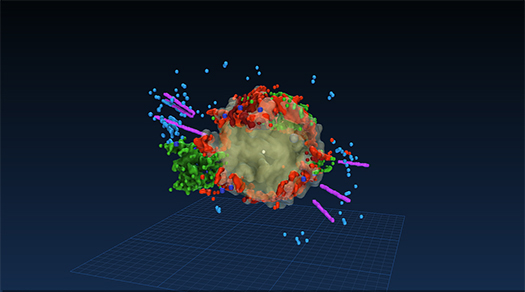Taking a Supernova into the Third Dimension

3D Supernova Remnant. Credit: NASA/CXC/SAO
When a satellite such as NASA's Chandra X-ray Observatory observes an object in space, its camera records photons – packets of energy that make up electromagnetic radiation. Recordings of these packets of energy come down to Earth from the spacecraft via NASA’s Deep Space network coded in the form of 1's and 0's.
Scientific software is then used to translate that data into a table that contains the time, energy and position of each photon that struck the detector during the observation. The data are further processed with software to form the visual representation of the object.
This process of visualization into an image typically starts in two dimensions, that is, a flat image. But we can add to that, particularly when we have a rich dataset for an object that Chandra has observed on many occasions. For example, we can map changes over time to create a time-lapse video of an exploded star. Or, in special cases, we can use velocity data and the Doppler effect to map an object into three dimensions
This is exactly what has been done with the data for Cassiopeia A, an exploded star about 10,000 light years from Earth. More than that, we developed a way to take this incredible dataset and make it available for 3D printers.
https://www.youtube.com/watch?v=8kTMr5LqIBQ
This recent TED talk goes through that process of transformation and translation on how to take a supernova into the third dimension:
-Kimberly Arcand, CXC
Read also: How to Hold a Dead Star in Your Hand
Category:
Subcategory:
- Log in to post comments

